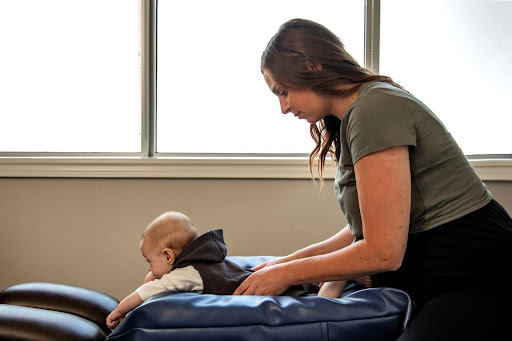When we think of important developmental milestones in babies, walking often steals the spotlight—but crawling, especially cross-crawling, deserves just as much attention. Why? Because it plays a huge role in building the foundation for brain development, coordination, and nervous system function.
Let’s break it down.
What Is Cross-Crawling?
Cross-crawling is when a baby moves opposite limbs together—right arm with left leg, and left arm with right leg. It’s a big leap from the earlier “army crawl,” and it shows that both sides of the brain are starting to communicate and coordinate effectively.
This pattern is key in developing:
- Left-right brain integration
- Balance and coordination
- Fine motor skills
- Hand-eye coordination
- Reading and learning readiness
So yes, crawling isn’t just cute—it’s a critical step in building a healthy brain and body.
How Cross-Crawling Connects to the Nervous System
Our nervous system is like a superhighway of communication between the brain and body. When babies cross-crawl, they are stimulating both hemispheres of the brain and laying the foundation for efficient neural pathways.
At the same time, they’re also integrating primitive reflexes—automatic reflexes we’re born with that should fade as we develop. If these reflexes don’t integrate properly, kids may experience challenges later on, such as:
- Clumsiness or poor coordination
- Learning difficulties
- Sensory sensitivities
- Trouble with focus or sitting still
One major reflex linked to crawling is the Tonic Labyrinthine Reflex (TLR) and the Asymmetrical Tonic Neck Reflex (ATNR). These need to integrate for smooth, coordinated movement—and crawling is a natural way the body does that.
Where Chiropractic Fits In
Chiropractic care supports healthy nervous system development by removing interference in the spine—especially in areas that may impact coordination, balance, and motor control.
If a baby had a stressful birth, struggles with tummy time, or skips crawling altogether, their spine and nervous system may need a little support. Gentle pediatric chiropractic adjustments can help:
- Improve spinal motion
- Support brain-body communication
- Reduce tension that might be interfering with natural movement patterns
- Encourage proper reflex integration
When the nervous system is clear, babies move more freely—and that means more opportunities to crawl, connect, and develop the way nature intended.
What If My Child Skipped Crawling?
It’s okay! Every child is unique. But if your child skipped cross-crawling, still has some uncoordinated movements, or struggles with focus, chiropractic care and reflex integration exercises can help reintroduce those movement patterns. Cross-crawl exercises can even be beneficial for older kids (and adults!) to boost brain function.
Crawling may look simple, but it’s a neurologic goldmine. Through repetitive, rhythmic, cross-body motion, babies wire their brains for success in school, sports, and life.
If you have questions about your child’s development—or just want to make sure their nervous system is thriving—chiropractic care can be a valuable part of their wellness journey.
Let’s build strong foundations—one crawl at a time.
